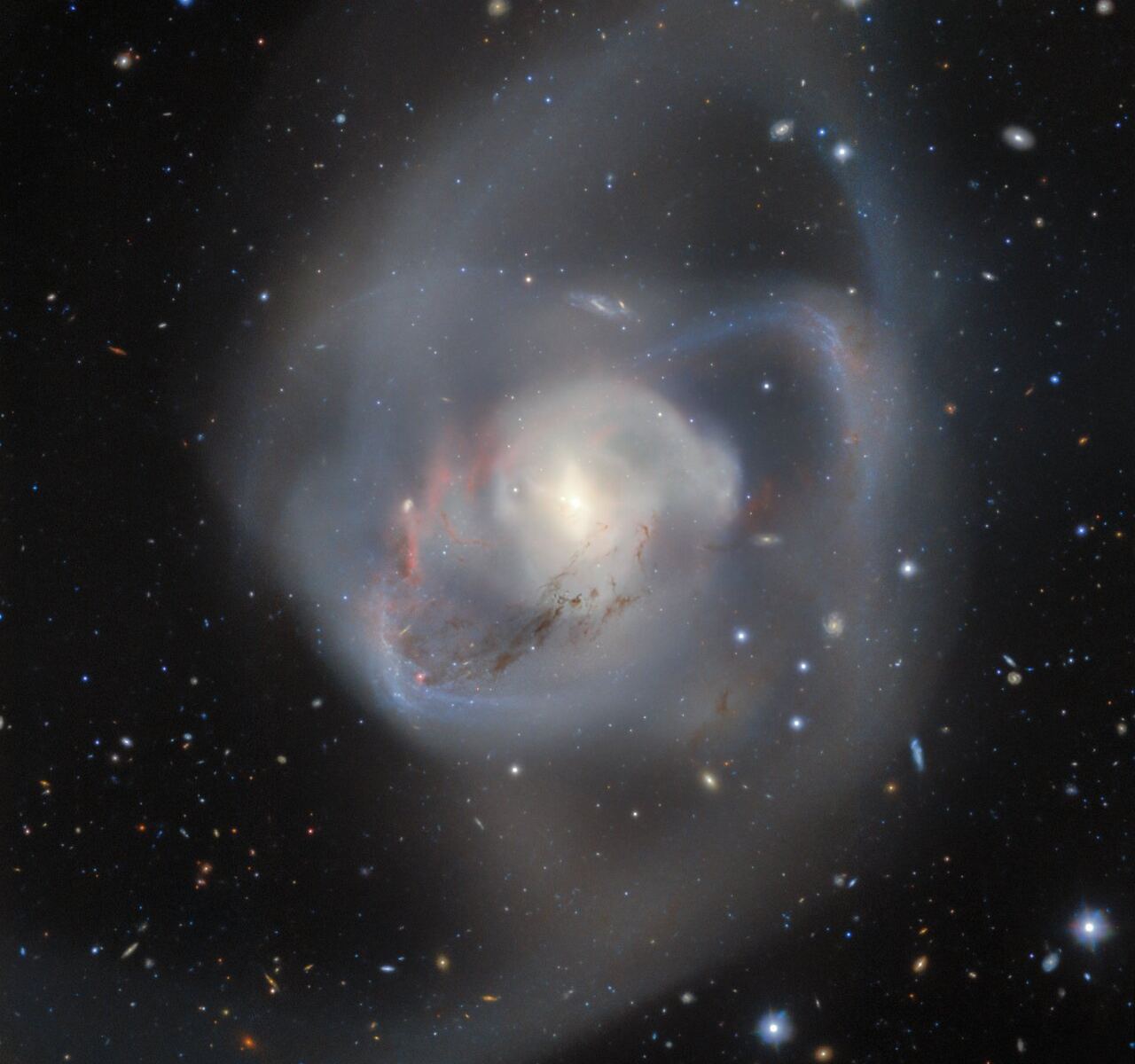No need to panic, but the Andromeda Galaxy is barreling towards us. It is due to begin merging with the our Milky Way Galaxy in a few billion years. From an outside observer, that process will very likely look like this new picture captured by the Gemini South Observatory. This is NGC 7727, a peculiar galaxy in the constellation Aquarius, about 90 million light-years away. Two giant spiral galaxies are merging, their gravitational interactions are hurling giant tidal tails of stars into the cosmos.
Astronomers believe the collision that created NGC 7727 began over a billion years ago. Inside this mess and chaos are pair of black holes – one from each original galaxy. These two black holes hold two records: 1. the closest supermassive black hole pair to Earth and, 2. the closest together pair ever seen.
One of the black holes measures 154 million solar masses and the other 6.3 million solar masses. They are approximately 1,600 light-years apart. Astronomers have estimated that the two black holes will eventually merge into one in about 250 million years. This will form an even more massive black hole, and the collision will emit violent ripples of gravitational waves across spacetime. Hopefully a future version of the LIGO (Laser Interferometer Gravitational-Wave Observatory) will be online so future astronomers can witness and record the event.
Even though the merger began long ago, the galaxy is still affected by the impact. Those giant tidal tails are bright with young stars and active stellar nurseries. In fact, about 23 objects found in this system are considered candidates for young globular clusters. Astronomer say these collections of stars often form in areas where star formation is higher than usual and are especially common in interacting galaxies as we see here.

Since the Milky Way and its closest neighbor Andromeda (a.k.a M31) are being pulled together in a gravitational dance, there will likely be similar events as seen in in NGC 7727. Some astronomers say it is likely the Sun will be flung into a different region of our galaxy, and Earth and the solar system will probably just go along for the ride and are in no danger of being destroyed.
Wheee!
Gemini South is one half of the International Gemini Observatory operated by NSF’s NOIRLab and is located on Mauna Kea on the Big Island of Hawai’i.


‘Wheee”? “What a mess”? Nancy Atkinson should be writing little kids reading material. Or maybe her day job is a cleaning woman.
If the universe is expanding faster than we thought , how can Andromeda collide with the Milky Way?